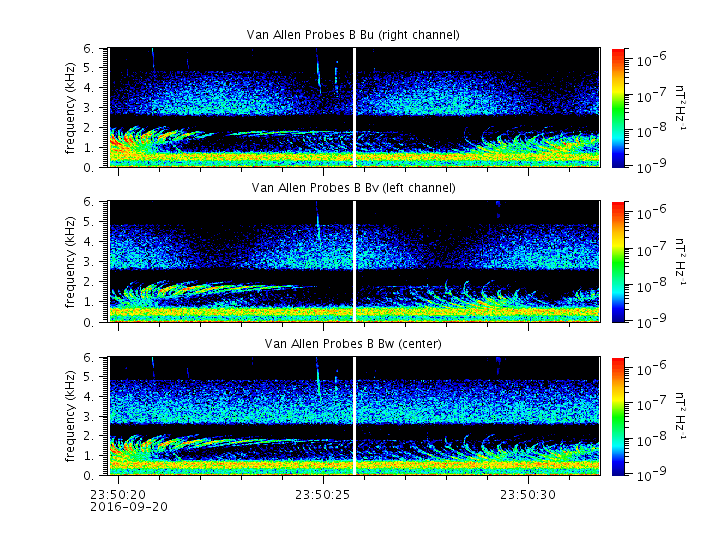Van Allen Probes EMFISIS Waves
Wild Whistlers 2016-09-20

|
|
|
|
AVI animation with moving cursor |
|
Multi-flash, multi-hop, multi-path, . . . One thing is certain: These are some wild whistlers! This amazing set of signals was recorded by the Van Allen Probes B spacecraft EMFISIS Waves instrument on September 20, 2016, at about 23:50 UTC. The measurements of three orthogonal magnetic antennas Bu, Bv, and Bw were combined to make the 60 second stereo audio recording. These signals, called whistlers, are created by lightning discharges in Earth's atmosphere which then propagate back and forth along magnetic field lines with lower frequencies being delayed as they travel through the thin charged gas of space. The resulting spread in frequency produces a whistling tone with the dispersion related to the quantity of plasma the signal has traversed. In this unusual case, the spacecraft was fairly close to Earth near the magnetic equator, so reflections from the conjugate points in the magnetosphere allowed for rapid echoes to occur. With each bounce the whistler moves to slightly higher altitudes and the corresponding change in magnetic field strength affects the upper frequencies, causing them also to slow down forming so-called "nose" whistlers. Quite the menagerie of plasma physics is at play here, and the result is . . . wild! The video presents a frequency-time spectrogram for the three antennas, with a moving cursor that shows the time position of the audio track. Time advances from left to right along the horizontal axis, frequency ranges from low to high frequencies along the vertical axes, and the amplitude of the signals is color coded with blue indicating weak signals and red indicating strong signals. |